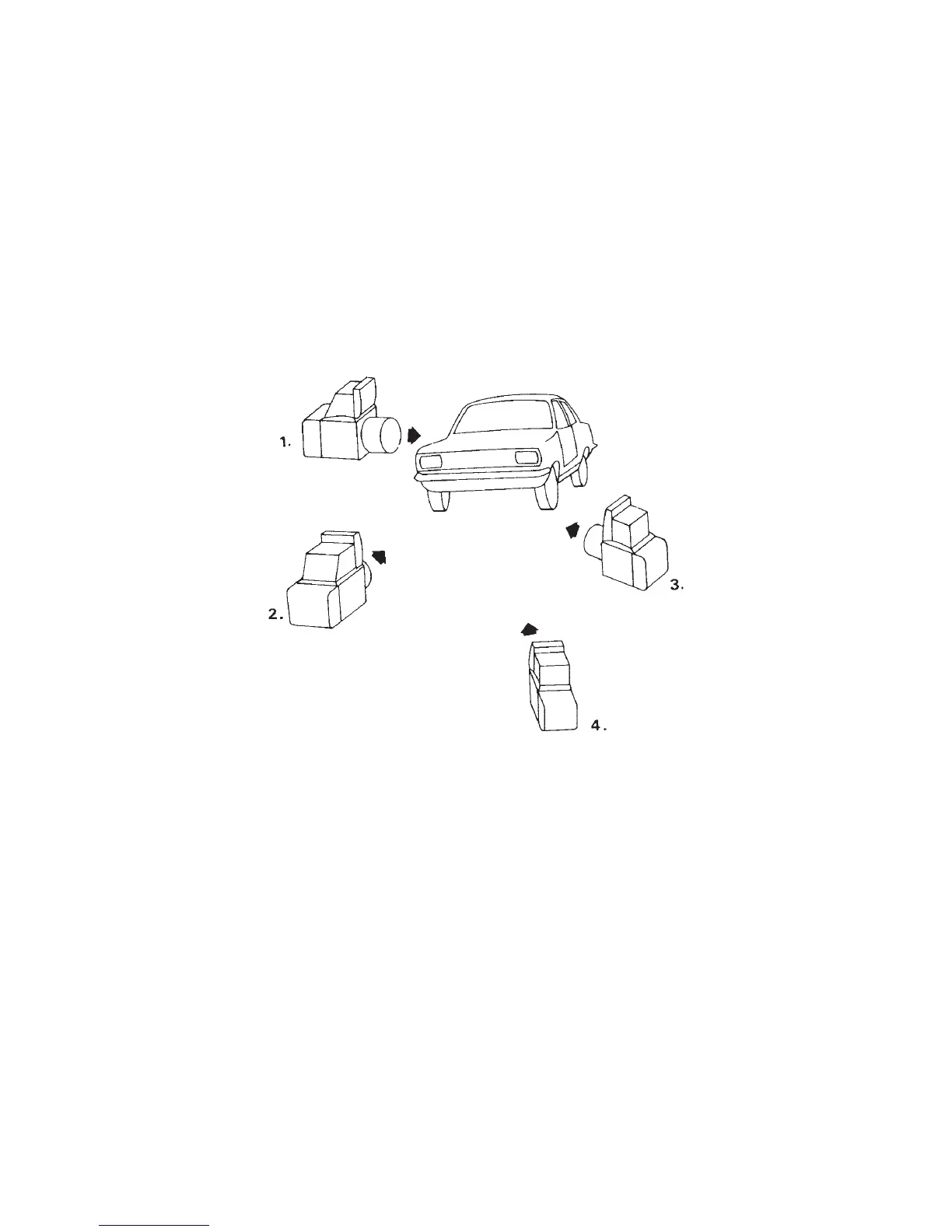Controls for Creating Effective Images on Film or Digitally 313
of view as different shutter speeds record moving subjects differently in the camera. You must
decide whether the motion is to be frozen, recorded with a slight blur, or completely blurred.
A moving subject recorded at a high shutter speed appears to be standing still, produc-
ing interesting and sometimes strange pictures. The shutter speed that stops action depends
on the speed of the moving subject, the size of the subject as recorded in the camera, and its
direction of movement in relation to the image plane (see Figure 16-17). To stop continuous
motion, — such as skiing; diving; motorcycle, car, and horse races; or roller coasters —
1
/
800
or
1
/
2000
second is frequently necessary, especially with longer focal length lenses.
Figure 16-17 Shooting direction. Using the same shutter speed, blur is greatest when the subject
is moving at right angles to the camera view (1). A subject moving at the same speed straight
(2) or at an angle (3) toward the camera view is less blurred. There will be less blur even at
the same shutter speed when the subject is photographed from a greater distance (4).
You can also stop motion at slower shutter speeds by photographing at the peak of the
action in actions and sports that have a beginning and an end or are repeated. There is a peak
of action on many amusement park rides, jumping on a trampoline, in ballet dancing, and in
other stage and circus performances (see Figure 16-18).
Blurred Motion Effects
Blurring subjects with a slow shutter speed is not limited to sports actions. Interesting and
fascinating images can be created with anything that moves: water in any form, refl ections
on water, clouds moving in the sky traffi c at night, amusement park rides, smoke, rain, snow,
trees, or fl owers or grass blown by the wind,. Because we cannot see blurred motion with our

